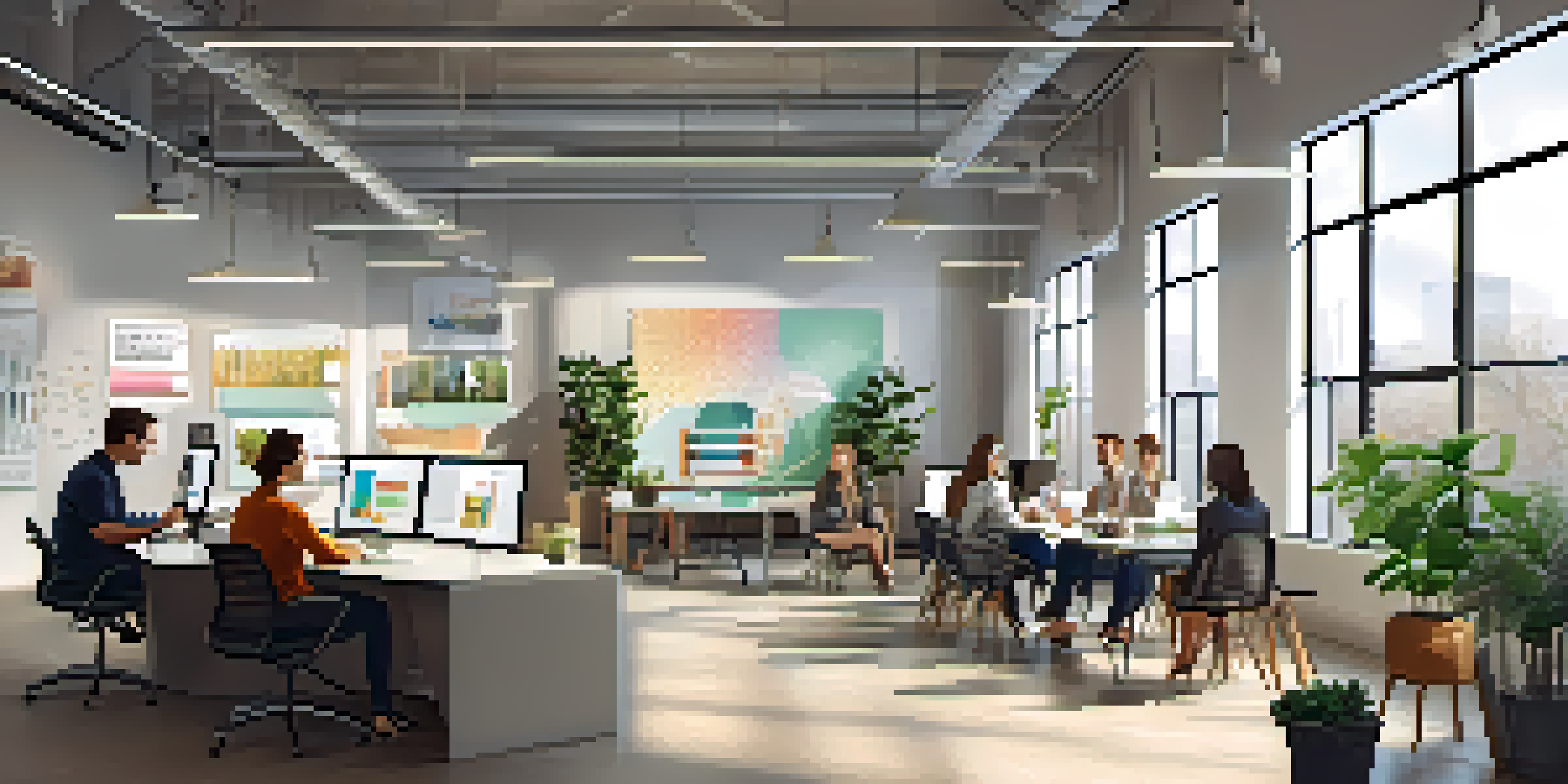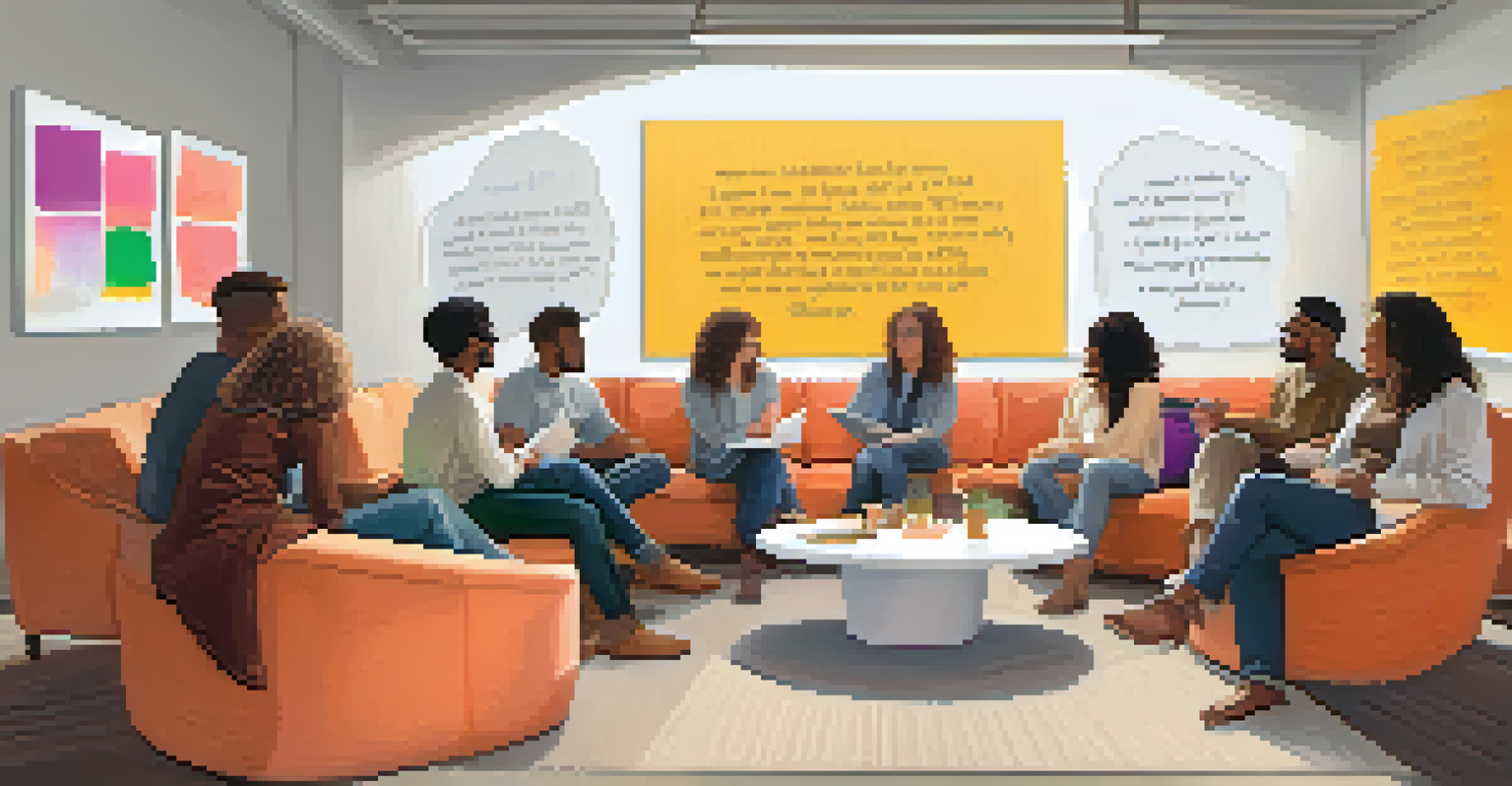Creating Safe Spaces for Creative Thinking in Organizations

Understanding the Concept of Safe Spaces
Safe spaces are environments where individuals feel secure and free to express their thoughts without fear of judgment. This concept is crucial in fostering creativity, as it encourages open dialogue and the sharing of ideas. When team members know their contributions will be valued, they are more likely to take risks and think outside the box.
Creativity is thinking up new things. Innovation is doing new things.
In a safe space, employees can engage in brainstorming sessions without the pressure of immediate critique or negative feedback. This allows for a flow of ideas that can lead to innovative solutions and creative breakthroughs. Think of it like a playground for the mind—where imagination runs wild and every thought is welcome.
Creating these environments requires commitment from leadership and a shift in company culture. It’s about nurturing an atmosphere where vulnerability is encouraged and everyone’s voice matters. By prioritizing psychological safety, organizations can unlock their team’s creative potential.
The Role of Leadership in Fostering Creativity
Leadership plays a pivotal role in establishing safe spaces for creative thinking. Leaders must model vulnerability by sharing their own ideas, failures, and learning experiences. When leaders demonstrate that it's okay to take risks, it sets the tone for the entire team, encouraging them to do the same.

Additionally, leaders can facilitate safe spaces by actively listening to team members and providing constructive feedback. This means creating opportunities for everyone to share their ideas and ensuring that all voices are heard. Just like a good coach who empowers players, great leaders inspire their teams to explore new possibilities.
Safe Spaces Boost Creativity
Creating safe spaces encourages open dialogue, allowing individuals to express ideas without fear of judgment.
Moreover, recognizing and celebrating creativity within the organization goes a long way. When team members see that their innovative efforts are valued, it reinforces the importance of contributing to discussions. This recognition fosters a culture where creative thinking is not just accepted but celebrated.
Encouraging Open Communication Among Team Members
Open communication is the backbone of a safe space for creativity. Encouraging team members to express their thoughts, feelings, and ideas without reservation is essential. This means creating an environment where everyone feels comfortable sharing, whether it’s during meetings or informal gatherings.
The best way to predict the future is to create it.
One effective way to promote open communication is through regular check-ins and feedback sessions. These can be structured as informal catch-ups that allow team members to share their ideas or challenges. By fostering a sense of community, team members will be more likely to contribute creatively.
Furthermore, using collaborative tools and platforms can help facilitate ongoing discussions. These tools allow for asynchronous communication, meaning team members can share their ideas without the pressure of speaking up in a group setting. It’s akin to having a digital suggestion box where creativity can flow freely.
Designing Physical Spaces That Inspire Creativity
The physical environment plays a significant role in fostering creativity. Designing spaces that are inviting and stimulating can encourage innovative thinking among team members. Consider incorporating elements like open layouts, comfortable seating, and areas for collaboration to enhance the creative atmosphere.
In addition to layout, adding inspiring visuals can ignite creativity. Wall art, motivational quotes, or even rotating displays of employee projects can create an engaging environment. Think of these spaces as canvases where creativity is not just encouraged but visually celebrated.
Leadership Shapes Creative Culture
Effective leadership fosters an environment where vulnerability is embraced, inspiring teams to take creative risks.
Moreover, providing quiet zones for reflection is equally important. Sometimes, creativity needs solitude to flourish. By offering spaces where employees can think deeply or brainstorm alone, organizations can ensure that all aspects of creative thinking are addressed.
Implementing Structured Brainstorming Sessions
Structured brainstorming sessions can be a game changer for creative thinking in organizations. These sessions provide a framework that encourages participation while ensuring that all voices are heard. By setting clear objectives and guidelines, teams can focus their efforts and generate meaningful ideas.
One popular technique is the 'round-robin' approach, where each participant takes turns sharing ideas. This method ensures that everyone contributes and prevents dominant voices from overshadowing others. It’s like a relay race, where each member passes their ideas to the next, building on each other’s contributions.
Additionally, incorporating fun and creative prompts can stimulate out-of-the-box thinking. Whether it’s using metaphors or visual aids, these techniques can inspire fresh perspectives. By making brainstorming sessions enjoyable, organizations can create an atmosphere where creativity thrives.
Fostering a Culture of Experimentation and Learning
Encouraging a culture of experimentation is vital for nurturing creativity. This means allowing employees to explore new ideas and projects without the fear of failure. Just as scientists conduct experiments to discover new truths, employees should feel empowered to test out their creative concepts.
Organizations can support this culture by providing resources for experimentation and learning. This could include time set aside for creative projects or access to tools and training that enhance skills. Think of it as giving employees a sandbox to play in, where they can build and innovate without restrictions.
Open Communication is Essential
Encouraging open communication among team members promotes a collaborative atmosphere that enhances creative contributions.
Moreover, celebrating both successes and failures is essential. When teams learn from their experiments, they grow collectively. By recognizing the lessons learned from failed attempts, organizations can reinforce the idea that every effort contributes to the creative journey.
Measuring the Impact of Safe Spaces on Creativity
To truly understand the effectiveness of safe spaces for creativity, organizations must measure their impact. This can involve gathering feedback from team members about their experiences and perceptions of the creative environment. Surveys and interviews can provide valuable insights into how safe spaces influence creative thinking.
Additionally, tracking the outcomes of creative initiatives can help gauge success. For example, monitoring the number of new ideas generated or projects completed can provide tangible evidence of a thriving creative culture. It's like keeping score in a game; it helps teams see their progress and celebrate achievements.

Finally, using qualitative metrics, such as employee satisfaction and engagement levels, can further illustrate the benefits of safe spaces. When team members feel valued and secure, their overall morale improves, leading to higher productivity and creativity. Measuring these factors can help organizations refine and enhance their creative environments.